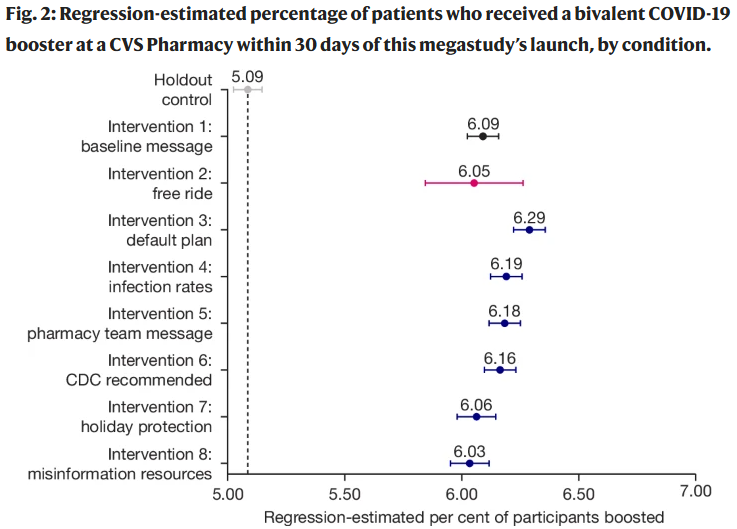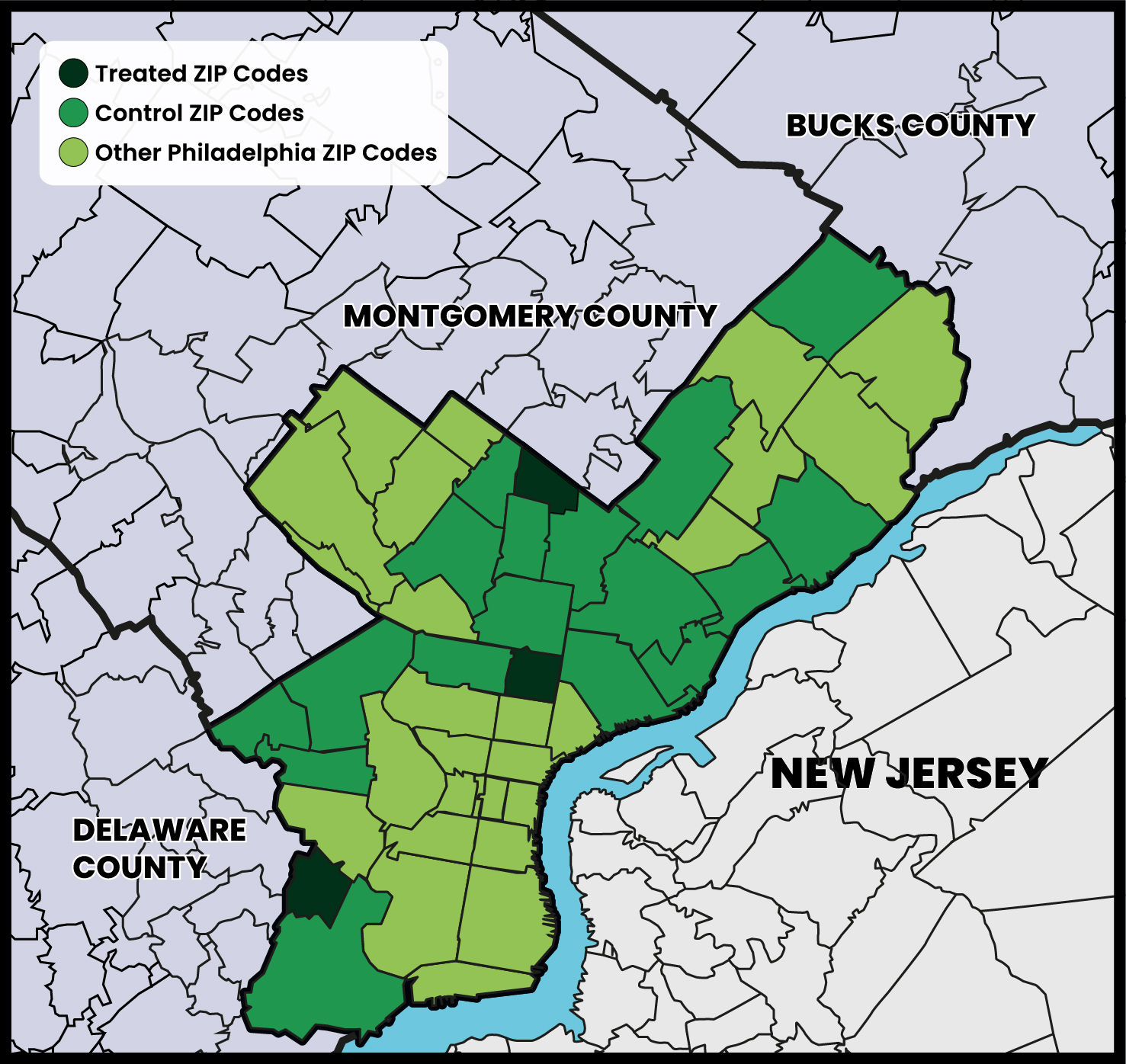PEER-REVIEWED PUBLICATIONS
“Can reminder emails compel Americans to save? A two-million-person megastudy” (September 2025, PNAS Nexus)
with Katherine L. Milkman, Shlomo Benartzi, Dean Karlan, Angela L. Duckworth, Sean F. Ellis, et al.
Abstract
In the United States, 24% of adults have no savings and 39% have less than a month of income saved. We present results from a megastudy where nearly 2 million customers of a US bank were randomly assigned to receive one of seven different 2-month email campaigns, each employing a different behavioral science insight to nudge one-time and recurring savings deposits and increase savings balances or to a control condition without such messages. These campaigns increased the probability of making a one-time savings deposit, on average, by 0.05 percentage points (a 0.51% increase over control). The best-performing campaign delivered weekly messages to customers that differed depending on recent savings behavior: messages to customers who had not made a savings account deposit in the last week included a simple reminder to save, while those to customers who had made a savings account deposit in the prior week were congratulated on this accomplishment. This top-performing campaign increased the monthly likelihood that a customer made a one-time savings deposit by 0.13 percentage points (a 1.32% increase). We estimate that rolling this 2-month campaign out to everyone in our megastudy population would have led to an extra $6,123,996 to $9,910,090 in savings. Together, our findings highlight that light-touch, frequent email nudges can cost-effectively create small increases in savings deposits in the United States. Ideally, to generate meaningful benefits, behavioral science insights would be incorporated into a wider range of communications and incentives designed by financial institutions.
“Megastudy shows that reminders boost vaccination but adding free rides does not.” (September 2024, Nature)
with Katherine L. Milkman, John A. List, Kevin G. Volpp, Angela L. Duckworth, Sean F. Ellis, et al.
Abstract
Encouraging routine COVID-19 vaccinations is likely to be a crucial policy challenge for decades to come. To avert hundreds of thousands of unnecessary hospitalizations and deaths, adoption will need to be higher than it was in the autumn of 2022 or 2023, when less than one-fifth of Americans received booster vaccines. One approach to encouraging vaccination is to eliminate the friction of transportation hurdles. Previous research has shown that friction can hinder follow-through and that individuals who live farther from COVID-19 vaccination sites are less likely to get vaccinated. However, the value of providing free round-trip transportation to vaccination sites is unknown. Here we show that offering people free round-trip Lyft rides to pharmacies has no benefit over and above sending them behaviourally informed text messages reminding them to get vaccinated. We determined this by running a megastudy with millions of CVS Pharmacy patients in the United States testing the effects of (1) free round-trip Lyft rides to CVS Pharmacies for vaccination appointments and (2) seven different sets of behaviourally informed vaccine reminder messages. Our results suggest that offering previously vaccinated individuals free rides to vaccination sites is not a good investment in the United States, contrary to the high expectations of both expert and lay forecasters. Instead, people in the United States should be sent behaviourally informed COVID-19 vaccination reminders, which increased the 30-day COVID-19 booster uptake by 21% (1.05 percentage points) and spilled over to increase 30-day influenza vaccinations by 8% (0.34 percentage points) in our megastudy. More rigorous testing of interventions to promote vaccination is needed to ensure that evidence-based solutions are deployed widely and that ineffective but intuitively appealing tools are discontinued.
“A synthesis of evidence for policy from behavioural science during COVID-19.” (December 2023, Nature)
with Katherine L. Milkman, David G. Rand, Eli J. Finkel, Michele Gelfand, Alia Crum, Cass R. Sunstein, Jay J. Van Bavel, Robb Willer, et al.
Abstract
Scientific evidence regularly guides policy decisions, with behavioural science increasingly part of this process. In April 2020, an influential paper proposed 19 policy recommendations (‘claims’) detailing how evidence from behavioural science could contribute to efforts to reduce impacts and end the COVID-19 pandemic. Here we assess 747 pandemic-related research articles that empirically investigated those claims. We report the scale of evidence and whether evidence supports them to indicate applicability for policymaking. Two independent teams, involving 72 reviewers, found evidence for 18 of 19 claims, with both teams finding evidence supporting 16 (89%) of those 18 claims. The strongest evidence supported claims that anticipated culture, polarization and misinformation would be associated with policy effectiveness. Claims suggesting trusted leaders and positive social norms increased adherence to behavioural interventions also had strong empirical support, as did appealing to social consensus or bipartisan agreement. Targeted language in messaging yielded mixed effects and there were no effects for highlighting individual benefits or protecting others. No available evidence existed to assess any distinct differences in effects between using the terms ‘physical distancing’ and ‘social distancing’. Analysis of 463 papers containing data showed generally large samples; 418 involved human participants with a mean of 16,848 (median of 1,699). That statistical power underscored improved suitability of behavioural science research for informing policy decisions. Furthermore, by implementing a standardized approach to evidence selection and synthesis, we amplify broader implications for advancing scientific evidence in policy formulation and prioritization.
“A citywide experiment testing the impact of geographically targeted, high-pay-off vaccine lotteries.” (September 2022, Nature Human Behaviour)
with Katherine L. Milkman, Richard Thaler, Devin Pope, Kevin G. Volpp, Angela L. Duckworth, Allison M. Buttenheim, Linnea Gandhi, Sean F. Ellis, Heather N. Graci, Dena M. Gromet, and Ala Stanford.
Abstract
Lotteries have been shown to motivate behaviour change in many settings, but their value as a policy tool is relatively untested. We implemented a pre-registered, citywide experiment to test the effects of three high-pay-off, geographically targeted lotteries designed to motivate adult Philadelphians to get their COVID-19 vaccine. In each drawing, the residents of a randomly selected ‘treatment’ zip code received half the lottery prizes, boosting their chances of winning to 50×–100× those of other Philadelphians. The first treated zip code, which drew considerable media attention, may have experienced a small bump in vaccinations compared with the control zip codes: average weekly vaccinations rose by an estimated 61 per 100,000 people per week (+11%). After pooling the results from all three zip codes treated during our six-week experiment, however, we do not detect evidence of any overall benefits. Furthermore, our 95% confidence interval provides a 9% upper bound on the net benefits of treatment in our study.



